Like so many others around the world, in March 2020 we left our offices thinking we would probably be back in a few weeks. Over a year later, we’re still working from home. During this time, we acquired objects related to the pandemic as a record of these difficult times.
One of the first things we did as we started working at home was to create a Word document titled ‘COVID-19 collecting’. We used it to gather ideas for which objects we would aim to collect to represent the impact of and response to the pandemic. It was important to document this moment in time as we live through it, and to preserve a material record of the events and experiences of 2020 for the future. Many years from now, these objects will tell people in the future about how the pandemic reshaped our lives.
Initially, we focused on six main areas: Public Health, Hospitals and Treatment; Politics; Economy; Tourism; Education; and Everyday Life. Subsequently, we’ve collected a diverse range of objects across all of our collections areas, from a rainbow-adorned beach pebble on a doorstep in Shetland to fish skin face masks from Alaska.
Scottish History and Archaeology
The pandemic has had an impact on people across the world and it has been experienced differently in different places. In the Department of Scottish History and Archaeology, the focus has been on representing the ways in which the pandemic has affected and been experienced in and across Scotland’s communities.
The rainbow – a symbol of hope, and of change – has punctuated daily life throughout the pandemic. Not just in windows, but in everything from street art and television advertisements to new book covers and food packaging.

This pebble was picked up from Hoswick beach in Shetland by the Wood family, who took it home and decorated it with Sharpie pens, glazed it with a layer of PVA glue and set it proudly by the front gate to make passers-by smile.
It was important to collect this pebble not only as a record of the rainbow as a symbol of hope during the pandemic across Europe but also of children’s experiences during lockdown. This particular pebble tells a story of how lockdown was experienced differently depending on where you lived and your access to outside space. In this case, the Wood family commented that they felt lucky to have had “the beach as a backyard”.
The medicinal tang of hand sanitiser is perhaps the defining smell of the pandemic. In a very short time, hand sanitiser has become a tool we use every day in an attempt to protect ourselves and people around us from COVID-19.
These pocket-sized bottles have taken on almost amuletic properties, as a form of protection carried with us as we move around. We added some to our collection to document this new addition to our everyday material world.
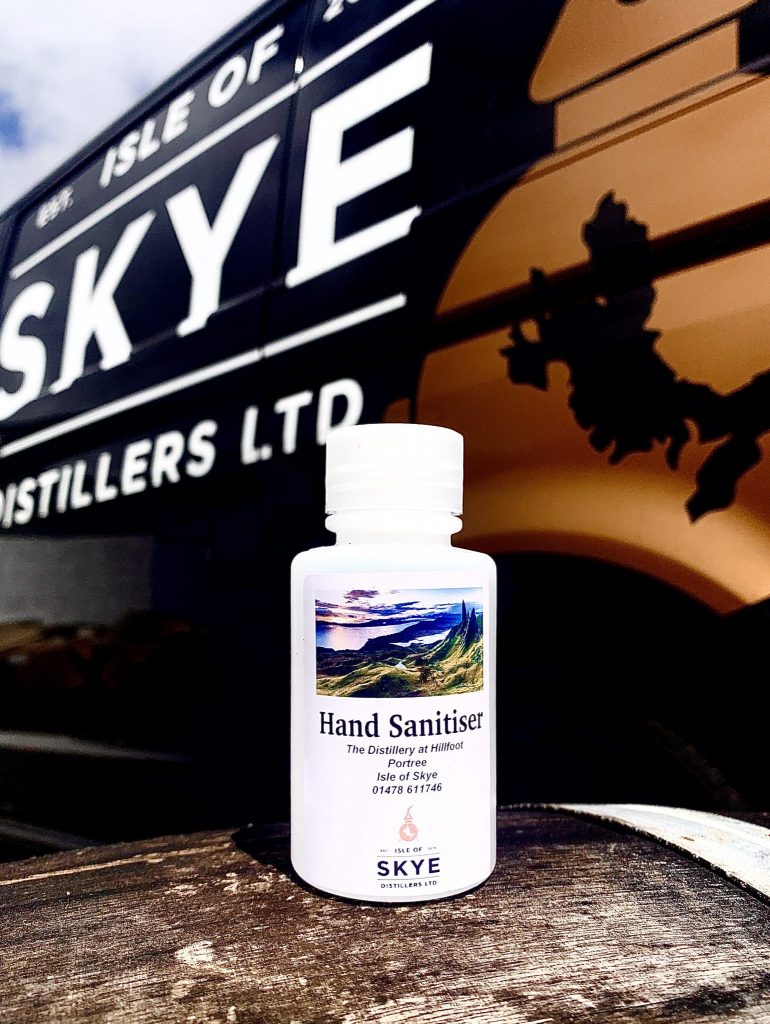
Across Scotland, distilleries adapted the production of gin and whisky to produce ethanol-based hand rubs that help keep our hands clean, according to formulations published by the World Health Organisation. Isle of Skye Distillers Ltd was one of those distilleries who stepped in to provide sanitiser for their local community, donating bottles to healthcare settings, schools and the emergency services in the island.
The label depicts a well-known and instantly recognisable landmark, the Old Man of Storr, against the sun setting in a big sky stretching towards Raasay and across to mainland Scotland. This striking use of imagery situates the sanitiser in the place of production and underlines how different industries have adapted in response to the pandemic.
Science and Technology
The Department of Science and Technology has looked to collect objects which represent the technology and public health impacts of COVID-19 while not taking resources away from where they are most needed.
These knitted hearts were part of an initiative created by Liz Smith, an intensive care nurse at Glasgow Royal Infirmary. Each pair is unique and was created by people in the local community for those in hospital who couldn’t be visited by loved ones.
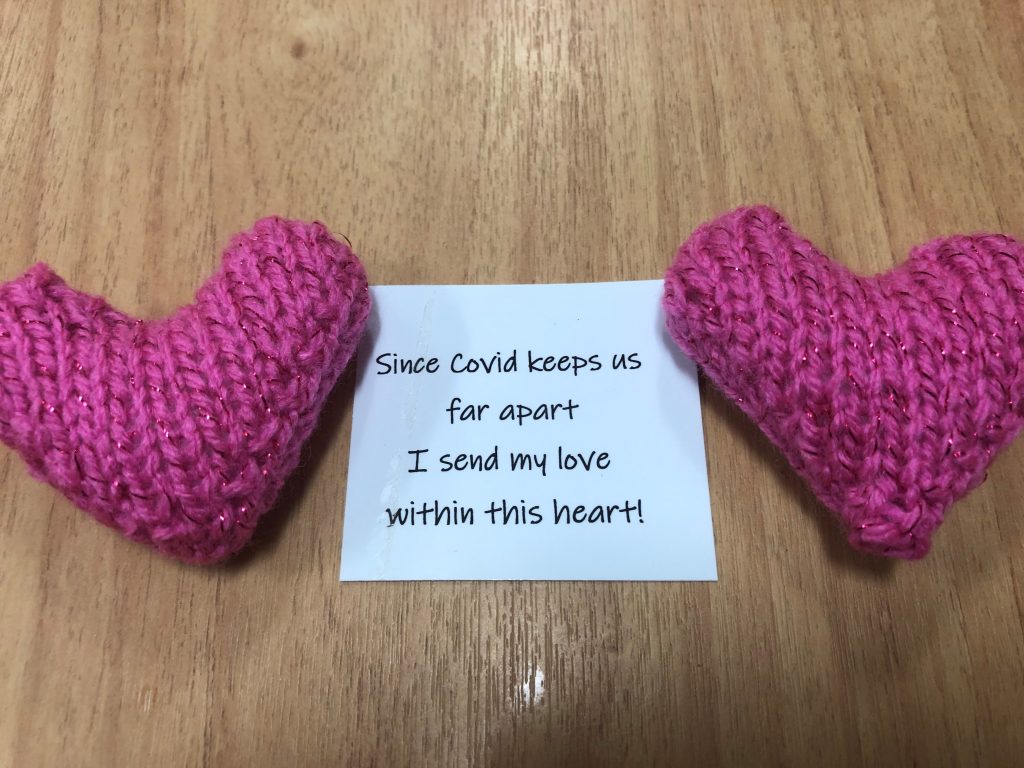
One heart was placed with the patient and the other given to their family, creating a connection between them while they were apart. The hearts were of particular interest to us because they captured the experience of patients, and their families, during the pandemic and allow us to tell that story.
World Cultures
The Department of World Cultures has taken a dual approach to collecting COVID-19. We have acquired objects which are more obvious visual symbols of the pandemic: face masks from across the globe which celebrate local and indigenous culture. We have also collected objects that tell global social histories of the pandemic from a perspective local to that region.
In response to the pandemic, Alaskan based Tlingit Athabascan artist Crystal Worl decided to explore the production of face masks that celebrated Indigenous North American culture and reflected a long tradition of mask making.
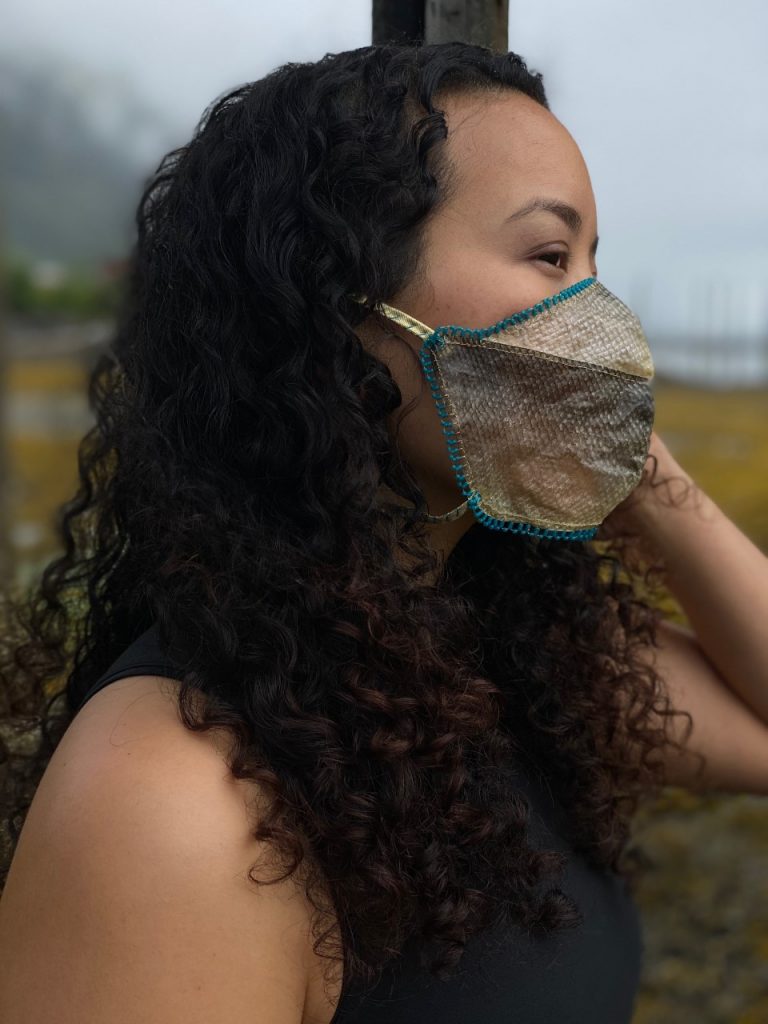
Crystal harvested the sockeye salmon used for this mask with her family and then tanned the skin herself. While the skin was used for this mask, the fish meat provided a meal for her family ensuring that nothing was wasted. We were drawn to this mask because it evokes the interconnection between Indigenous peoples in Alaska and nature which feeds, clothes and protects.
As the first country to identify the existence of COVID-19, China initiated a lockdown from 23 January until early April 2020 to prevent any further spread of the virus. For that reason, we felt that it was important to represent personal and family experiences in China in our collections.
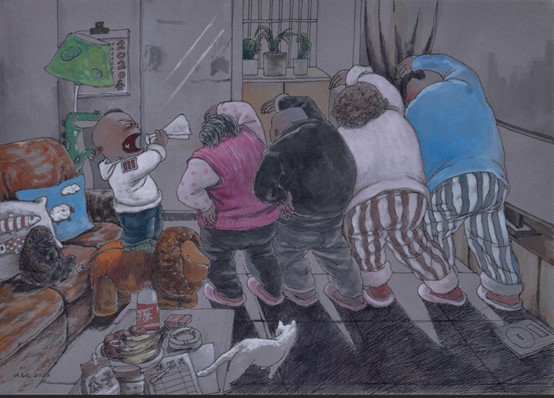
We acquired a set of six paintings by Chinese artist Xie Jibin which depict everyday family life inside Chinese homes during this period of lockdown. The series captures the dynamics of the domestic space, family relationships and the emotions of lockdown. The paintings depict scenes which are familiar to all of us, such as people posing for selfies in their pyjamas and collective family exercising.
Art and Design
The department of Art and Design looked to acquire works that represent how artists, makers and designers from across the UK, Europe and the US have responded. Whether that’s through design innovations and emotive artworks, or the impact of the pandemic and wider socio-political movements that have transpired over the last year.
Many of the designs which emerged during 2020 were developed in response to a need to adapt existing fixtures often within a limited timeframe. Almost overnight, interacting with our built environment became problematic. Tasks such as opening doors or operating keypads without touching them presented multiple challenges.
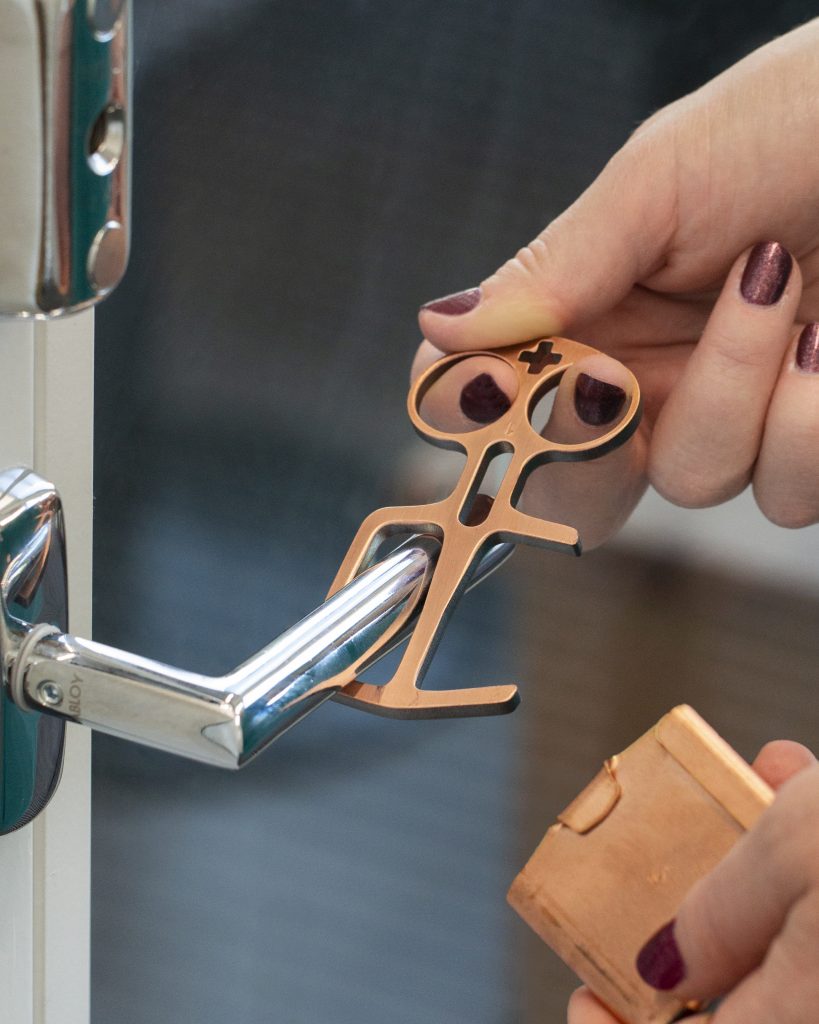
The ‘Space Key’ designed by Erwin Laiho in 2020 is a direct response to that. A multipurpose hand-held touch tool with protective cover, it was designed to help overcome new barriers in existing, everyday objects.
We were drawn to this particular design as both a strong example of practical non-medical PPE, as well as for its choice of materials. It’s made from copper, a material known for its antibacterial properties and which serves as a built-in disinfection mechanism. It enables the user to avoid handling contaminated everyday surfaces, showing how the pandemic has required creative design solutions to help navigate the world around us safely.
How creatives responded to the socio-political and emotive impact of the COVID-19 global situation was also a key thread to our collecting rationale. The American artist jeweller Sera Park Choi created a series of wearables and masks using traditional bead working techniques during her lockdown as a student in Rhode Island.
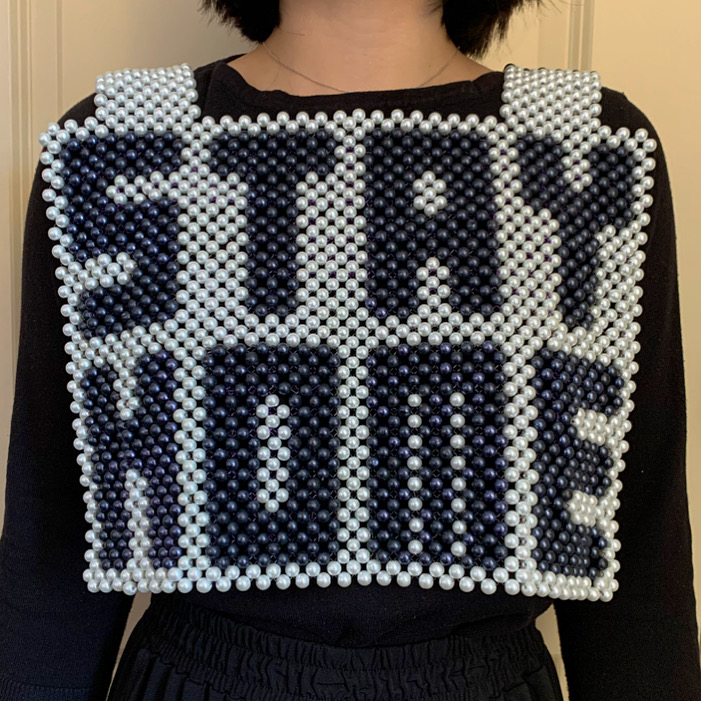
Sera’s Stay Home! protective vest piece not only resonates with our global situation and governments’ call to “Stay Home”. It was also created as a symbol of the societal racism that was and continues to be levelled at Asian communities. And how she feels America still questions her otherness and place within society as a woman of émigrés.
Natural Sciences
The pandemic has been a period of respite for some of the natural world as human activities have reduced substantially. Many animals have become bolder as they moved into our much quieter villages and towns as we have stayed at home. However, while our environmental impact is currently reduced, it has not stopped.
An important role for the Department of Natural Sciences is to continually collect specimens from the natural world which reflect the wider environment and our impact on it. Normally we add around 600 animal specimens to the vertebrate collections each year, but with lockdown for most of the last 12 months, we have had to be more selective.
In October 2020 two rare Sowerby’s beaked whales, Mesoplodon bidens, were stranded in East Lothian and brought to our Collections Centre for post-mortem examination by the Scottish Marine Animal Strandings Scheme and preservation by museum staff. We discovered an unusually high number and wide spread of gas bubbles throughout the lungs, liver and other organs. These findings suggest that both animals died of the bends or decompression sickness, where nitrogen gas bubbles form in the internal organs if pressure is reduced rapidly by a quick return to the surface.
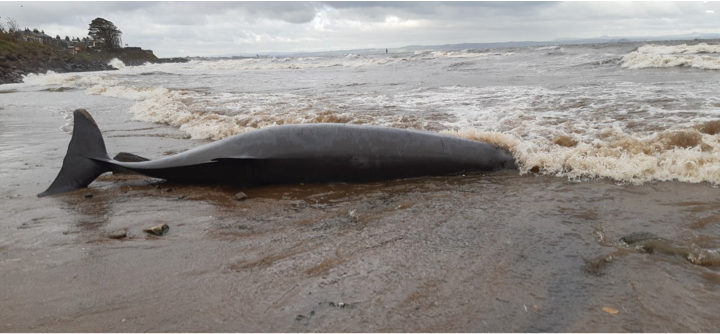
Deep-diving beaked whales elsewhere in the world have been killed by the bends when scared to the surface by naval sonar. Another unintended consequence of human activity. There is concern that these two Sowerby’s beaked whales may have suffered a similar fate, but this has not yet been confirmed. Samples of body tissues were added to our biobank for genetic and other testing, and their skeletons will be preserved as well.
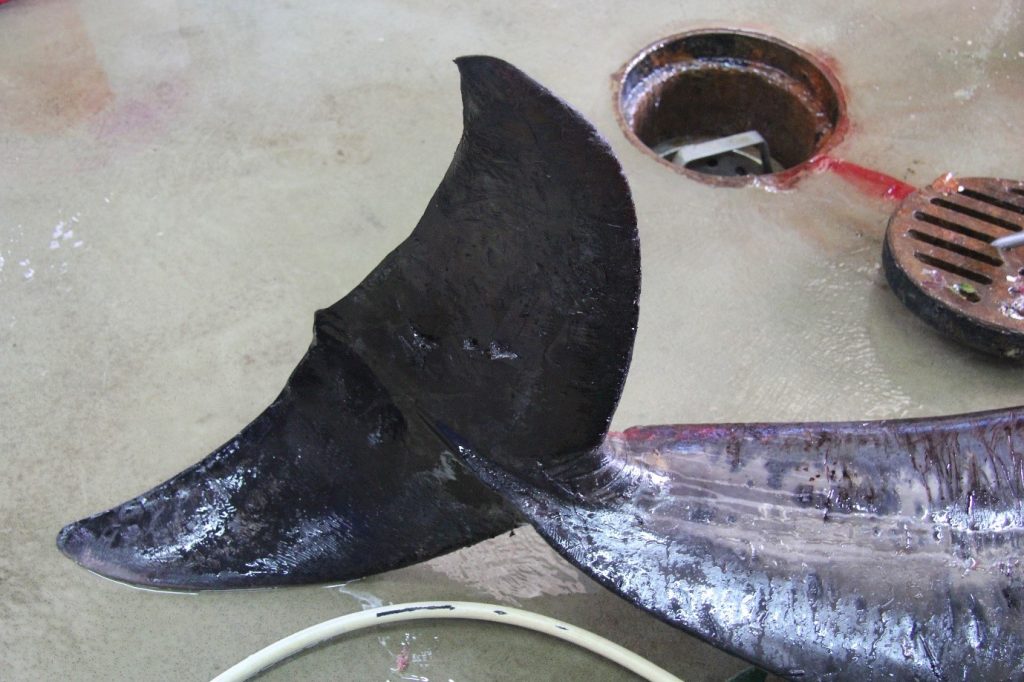
We are grateful for the support of the SeaWorld and Busch Gardens Conservation Fund for supporting our collecting of these beaked whales, and to the Negaunee Foundation for their support of a curatorial preparator, who prepares vertebrate specimens for our collections. Our biobank was developed as part of the CryoArks project, which is led by Cardiff University and supported by the Biotechnology and Biosciences Research Council. We are also grateful to East Lothian Council for collecting one of the Sowerby’s beaked whales. These are just some examples of the support we’ve received and we are grateful to everyone who has helped us document the pandemic.
Our large and increasing collection of cetaceans and their samples are vital for a better understanding of environmental change and our impact on the natural environment. We are pleased to have been able to collect these important specimens during this incredibly difficult year.
As we begin to see a glimpse of light at the end of the tunnel, keep an eye out for a deeper dive into these and other object stories relating to the pandemic soon.
